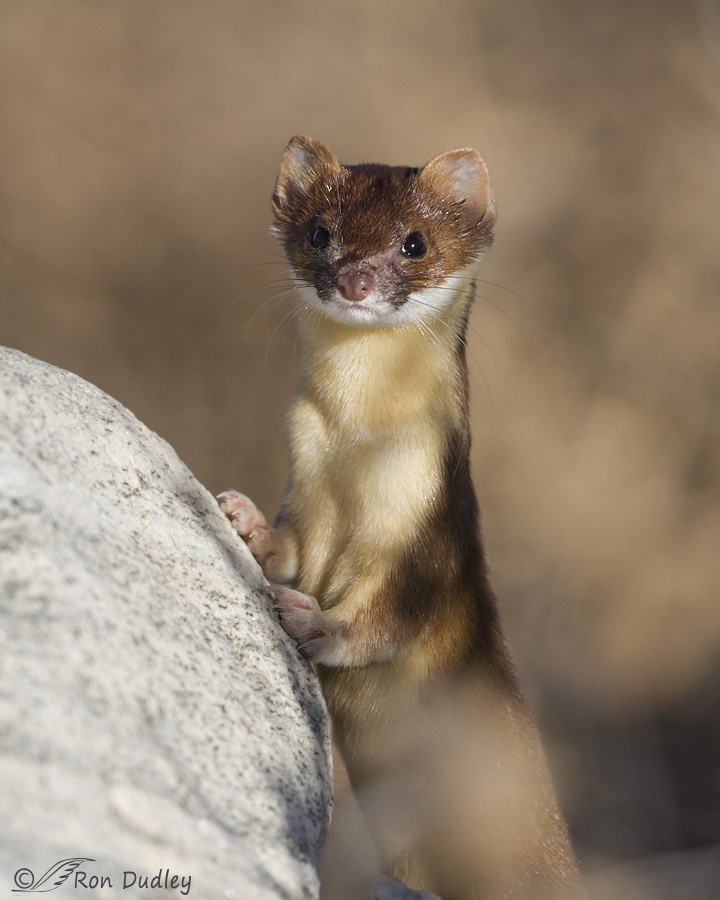Close Encounter With A Long-tailed Weasel

I had a brief but interesting encounter with a Long-tailed Weasel yesterday morning at Farmington Bay. The little mustelid ran across the road in front of my pickup and buried itself in the brush and rocks but on the long shot that it would reappear I stopped anyway. And reappear it did, right under my nose.

